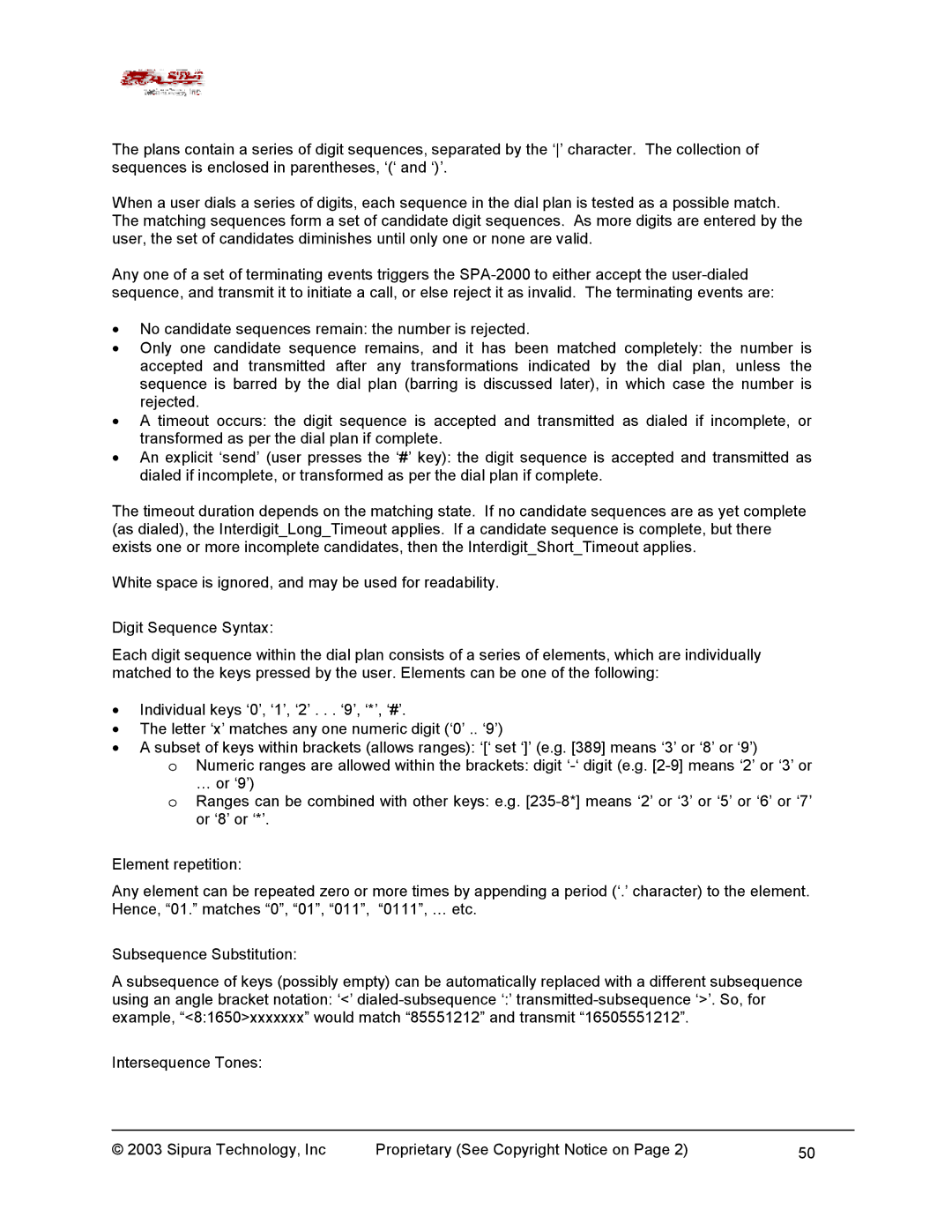
The plans contain a series of digit sequences, separated by the ‘’ character. The collection of sequences is enclosed in parentheses, ‘(‘ and ‘)’.
When a user dials a series of digits, each sequence in the dial plan is tested as a possible match. The matching sequences form a set of candidate digit sequences. As more digits are entered by the user, the set of candidates diminishes until only one or none are valid.
Any one of a set of terminating events triggers the
•No candidate sequences remain: the number is rejected.
•Only one candidate sequence remains, and it has been matched completely: the number is accepted and transmitted after any transformations indicated by the dial plan, unless the sequence is barred by the dial plan (barring is discussed later), in which case the number is rejected.
•A timeout occurs: the digit sequence is accepted and transmitted as dialed if incomplete, or transformed as per the dial plan if complete.
•An explicit ‘send’ (user presses the ‘#’ key): the digit sequence is accepted and transmitted as dialed if incomplete, or transformed as per the dial plan if complete.
The timeout duration depends on the matching state. If no candidate sequences are as yet complete (as dialed), the Interdigit_Long_Timeout applies. If a candidate sequence is complete, but there exists one or more incomplete candidates, then the Interdigit_Short_Timeout applies.
White space is ignored, and may be used for readability.
Digit Sequence Syntax:
Each digit sequence within the dial plan consists of a series of elements, which are individually matched to the keys pressed by the user. Elements can be one of the following:
•Individual keys ‘0’, ‘1’, ‘2’ . . . ‘9’, ‘*’, ‘#’.
•The letter ‘x’ matches any one numeric digit (‘0’ .. ‘9’)
•A subset of keys within brackets (allows ranges): ‘[‘ set ‘]’ (e.g. [389] means ‘3’ or ‘8’ or ‘9’)
oNumeric ranges are allowed within the brackets: digit
oRanges can be combined with other keys: e.g.
Element repetition:
Any element can be repeated zero or more times by appending a period (‘.’ character) to the element. Hence, “01.” matches “0”, “01”, “011”, “0111”, … etc.
Subsequence Substitution:
A subsequence of keys (possibly empty) can be automatically replaced with a different subsequence using an angle bracket notation: ‘<’
Intersequence Tones:
© 2003 Sipura Technology, Inc | Proprietary (See Copyright Notice on Page 2) | 50 |
